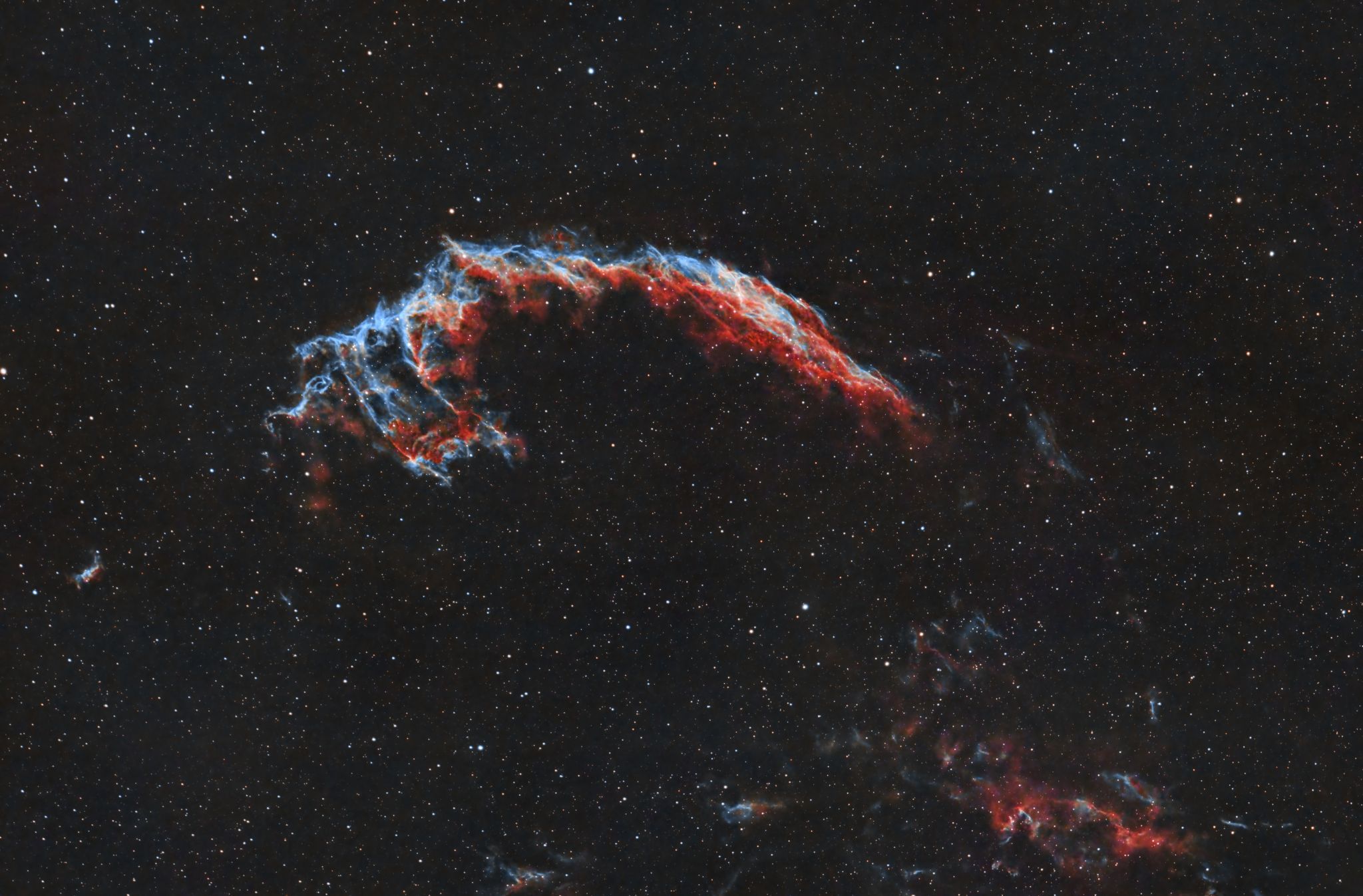EarthSky Community Photos
Submit your photo here. Comment or upvote on photo pages. Search via photographers' names. More improvements coming! To help, please donate.

Eden, NY
11:50 pm
Telescope: Explore Scientific Essential Series 80 mm Apo Triplet
Camera: Canon T6i (Modified)
Filter: Optplong L-eXtreme Dual Narrowband Filter
Mount: Sky-Watcher EQ6-R Pro
Misc.: ZWO EAF, Pegasus Power Box Advanced, ZWO ASI224MC, & Orion Deluxe Mini 50 mm Guide Scope
Exposure: 30 subs 180 Sec @ ISO 1600 (Total Exposure: 1.5 Hours)
Calibration Frames: 20 Darks, 50 flats, & 50 Bias
Processed in PixInsight with some finishing touches in Photoshop
PixInsight: blink, Sub Frame Selector, WBPP, Dynamic Crop, DBE, PCC, NoiseXTerminator, Hist. Trans., Curves, SCNR
Photoshop; Astronomy Tools Action Set and Camera Raw Filter
Between 5,000 and 10,000 years ago a star went Kablooie …
NGC 6992 aka The Eastern Veil Nebula is one part of the Veil Nebula (Cygnus Loop) located in the constellation Cygnus. About 8,000 years ago a Star about 20 times more massive than our Sun went supernova. The most recent estimate for distance to the object is about 2,400 Light-Years. Before exploding, the massive star’s stellar wind blew a cavity or bubble in the surrounding area. What we see when looking at this object are the results of the shockwave from the supernova slamming into this cavity. This is an object that can be observed visually, although not with the colors and details captured by the camera. Dark Skies, large aperture, and a nebula filter (Oiii preferably) are required.
This image was captured from my backyard with my Deep Sky Imaging rig.








